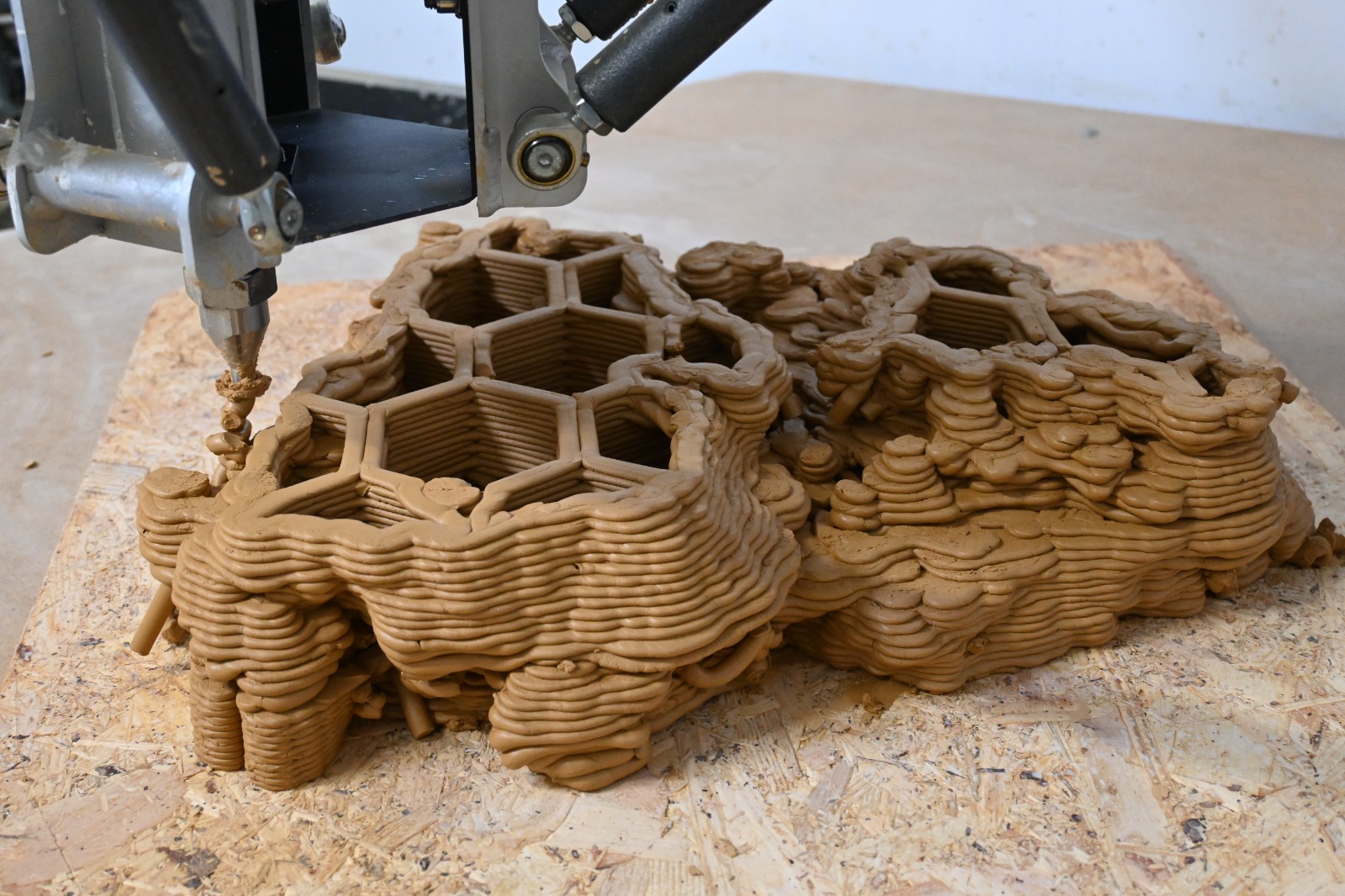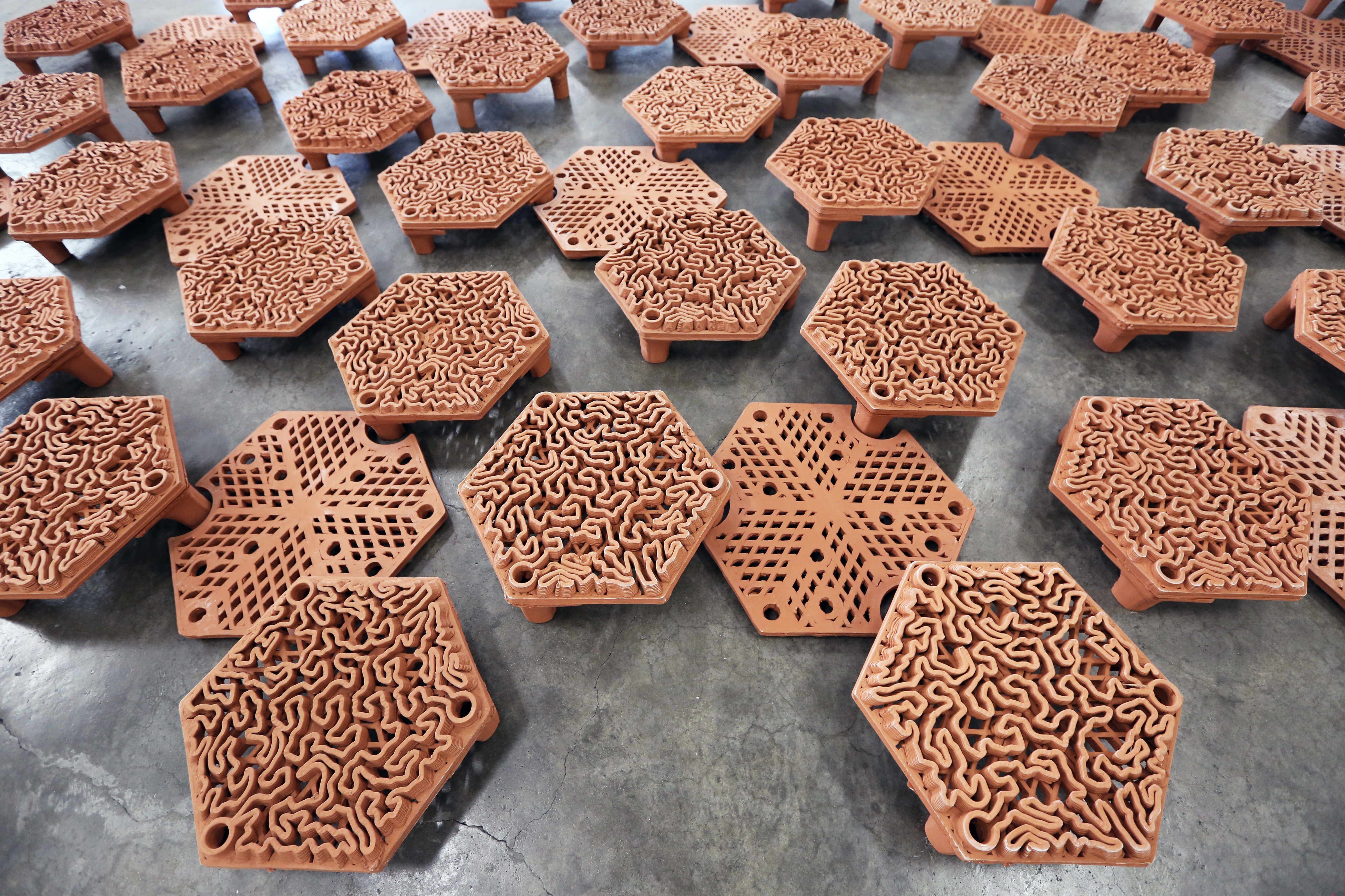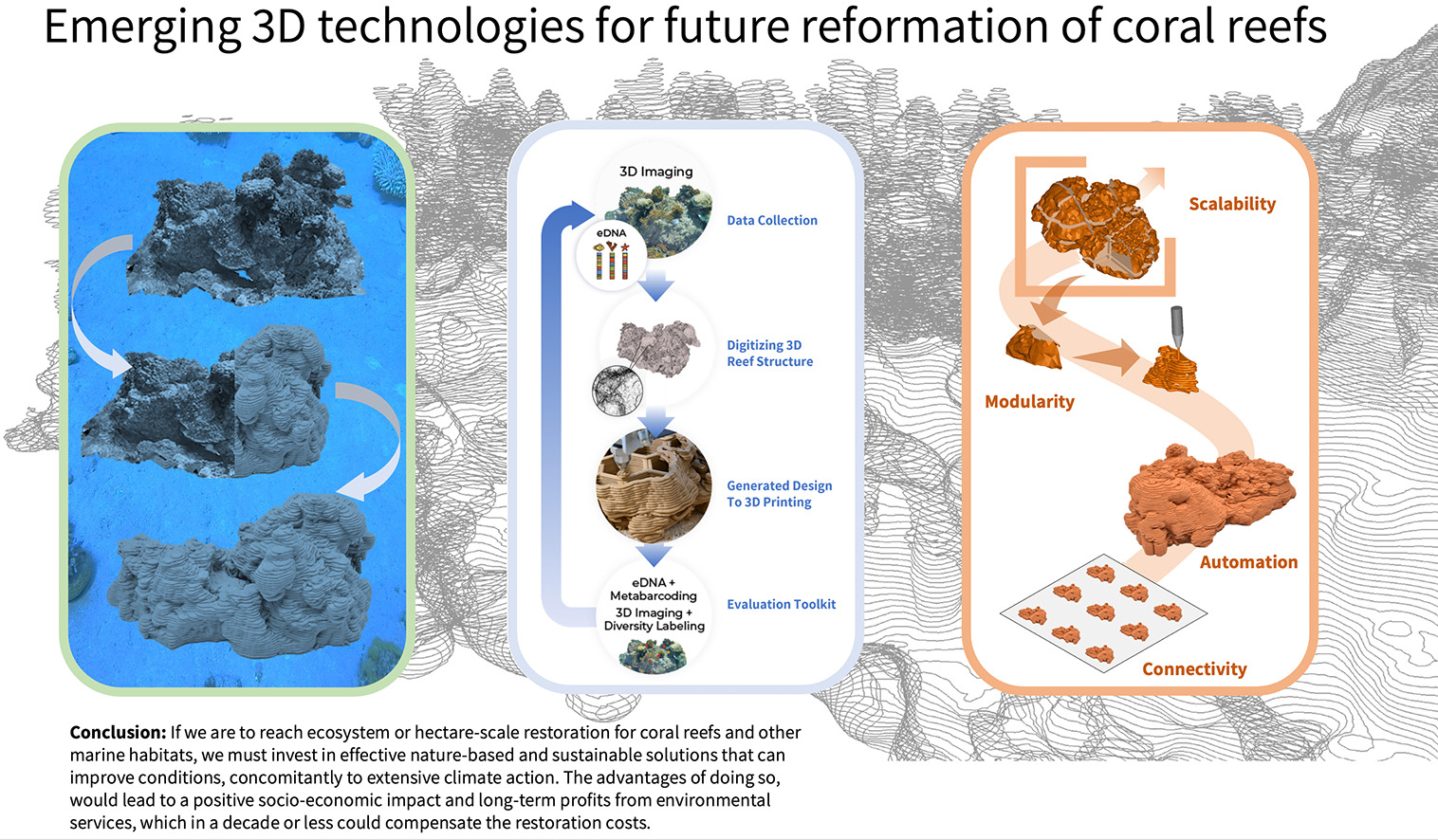Researchers from four of Israel’s leading universities have developed a novel 3D printing process that could help to preserve vital coral reefs across the globe.
Combining 3D scanning, environmental DNA sampling, and 3D printing algorithms, the team successfully produce a unique 3D printed ceramic reef capable of sustaining life and encouraging the regrowth of entire reef ecosystems.
“The rapid decline of coral reefs has increased the need for exploring interdisciplinary methods for reef restoration,” said Natalie Levy, a PhD student at Bar-Ilan University. “Examining how to conserve the biodiversity of coral reefs is a key issue, but there is also an urgent need to invest in technology that can improve the coral ecosystem and our understanding of the reef environment.”

Replacing lost coral reefs with 3D printing
Due to factors such as global warming and accelerated urbanization in coastal areas, the world’s coral reefs are in rapid decline, with many becoming extinct. As a result, this places huge stress on marine life that depend on coral reefs for their survival and is subsequently having a catastrophic effect on the biodiversity of our oceans.
Additive manufacturing is one of many technologies being explored to help nourish our coral reefs back to health, with attempts to produce life-sustaining 3D printed coral reefs dating back as far as 2015. Subsequent studies have produced positive results regarding the integration of 3D printed coral structures into marine environments, proving the technology’s potential to aid the rejuvenation of natural coral reefs.
More recent projects from the University of Cambridge and UC San Diego have seen the successful bioprinting of coral-mimicking structures capable of growing communities of microscopic algae, while scientists from Hong Kong University have taken a slightly different approach with the 3D printing of terracotta tiles that are engineered to encourage coral attachment.

A new approach to coral reef preservation
What sets the Israeli researchers’ approach to 3D printing coral reefs apart from previous efforts is the combination of 3D scanning, DNA sampling, and 3D printing algorithms that allow the artificial reefs to be precisely tailored to a specific environment.
“Existing artificial reefs have difficulty replicating the complexity of coral habitats and hosting reef species that mirror natural environments,” said Levy. “We introduce a novel customizable 3D interface for producing scalable structures, utilizing real data collected from coral ecosystems.”
Alongside the team from Bar-Ilan University, researchers from Technion, the University of Haifa, and Tel Aviv University also contributed to the study.
The study aimed to address two critical elements of saving coral reefs. First, is the need for an innovative, adaptable approach that facilitates large-scale restoration of coral reefs worldwide, and secondly, the recreation of a coral reef’s natural complexity both in size and design that will attract local coral, fish, and invertebrate species to support its regrowth.
To demonstrate their novel 3D printing process, the researchers focused on the natural structure of coral reefs off the southern coastal Israeli city of Eilat, although their model is reportedly adaptable to other marine environments around the world.

First, the team scanned underwater photographs of coral reefs from which an accurate digital 3D model could be assembled. Thousands of images were photographed and sent to the laboratory in order to calculate the reef’s complex form and understand how its form encourages the reef’s species diversity.
The team then leveraged a molecular method to collect environmental genetic information to provide data on the organisms living in the reef. This data was incorporated with other parameters, such as core reef characteristics, and fed into a “3D technology algorithm” that enabled an interactive parametric model of the reef to be built. This model could then be designed to precisely fit the desired reef environment.
Finally, the team translated the digital model into the real world using a ceramic 3D printing process. The unique ceramic material used to print the reef is naturally porous underwater and, according to the researchers, is engineered to provide the ideal conditions for the reef’s restoration.
“3D printing with natural material facilitates the production of highly complex and diverse units that is not possible with the usual means of mold production,” said Professor Ezri Tarazi from Technion’s Architecture and Town Planning Faculty.
According to the team, the creation of the 3D printing algorithm allowed in-depth and accurate examination of the data from each reef as well as the ability to tailor the 3D printed model to a specific reef environment. Data can be continually re-fed into the algorithm to assess the level of effectiveness and efficiency of the design after it has been implemented, based on information collected during the process.
“The use of 3D printing allows extensive freedom of action in reality algorithm-based solutions, and the assimilation of sustainable production for the development of large-scale marine rehabilitation,” added Technion’s Ofer Berman.
The team is currently installing several of its 3D printed reefs in the Gulf of Eilat, and is confident that the results they obtain will act as a blueprint to help it to deploy its 3D printing process and algorithms to other reef ecosystems around the world.
Further information on the study can be found in the paper titled: “Emerging 3D technologies for future reformation of coral reefs: Enhancing biodiversity using biomimetic structures based on designs by nature,” published in the Science of the Total Environment journal. The study is co-authored by N. Levy, O. Berman, M. Yuval, Y. Loya, T. Treibitz, E. Tarazi, and O. Levy.
Subscribe to the 3D Printing Industry newsletter for the latest news in additive manufacturing. You can also stay connected by following us on Twitter and liking us on Facebook.
Looking for a career in additive manufacturing? Visit 3D Printing Jobs for a selection of roles in the industry.
Subscribe to our YouTube channel for the latest 3D printing video shorts, reviews, and webinar replays.
Featured image shows an overview of the researchers’ novel 3D printing approach. Image via Bar-Ilan University.



